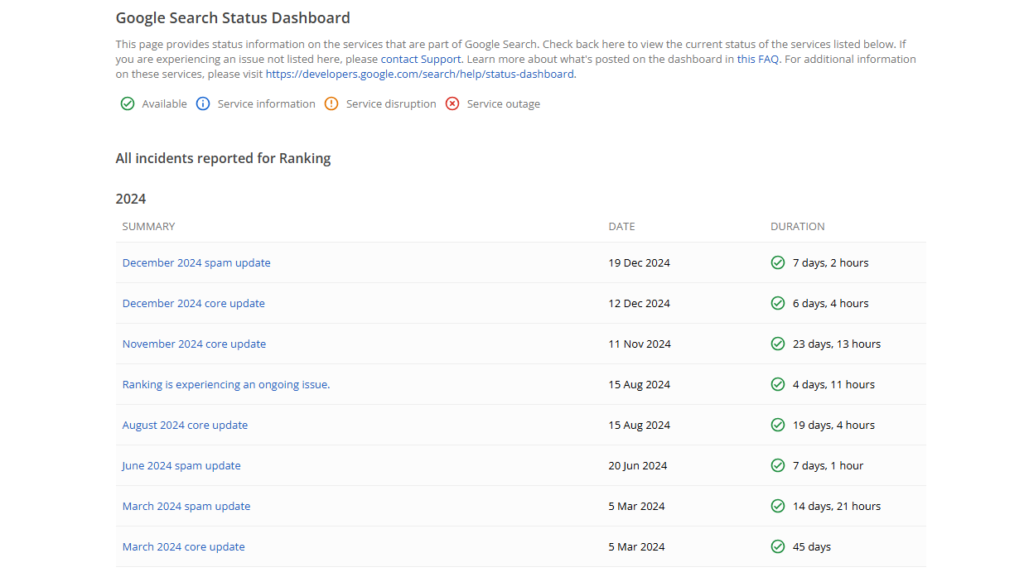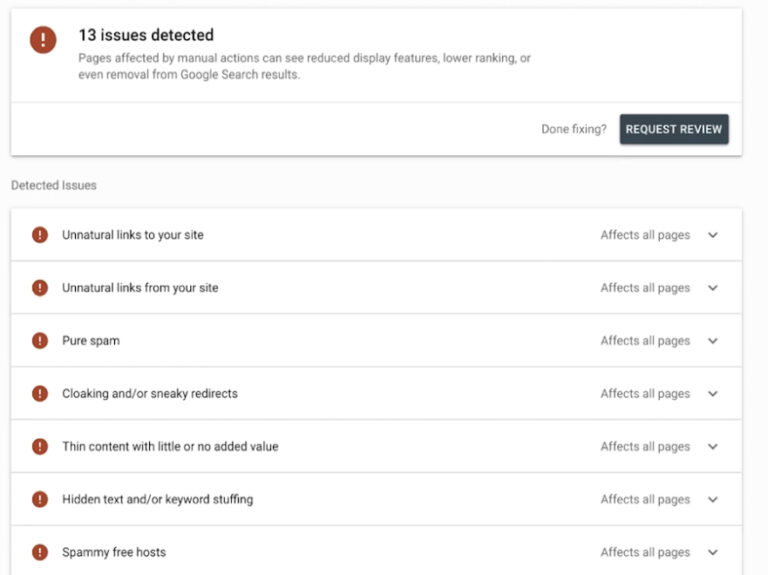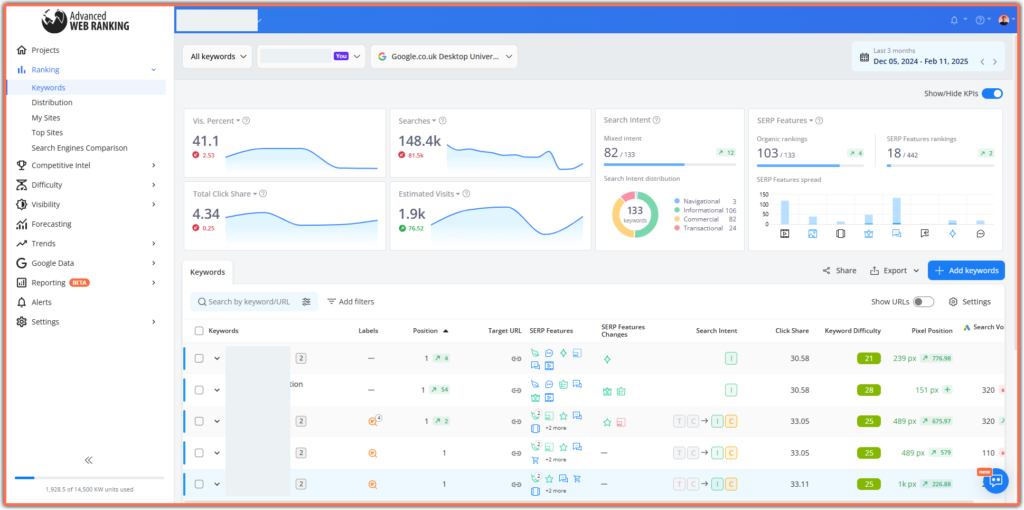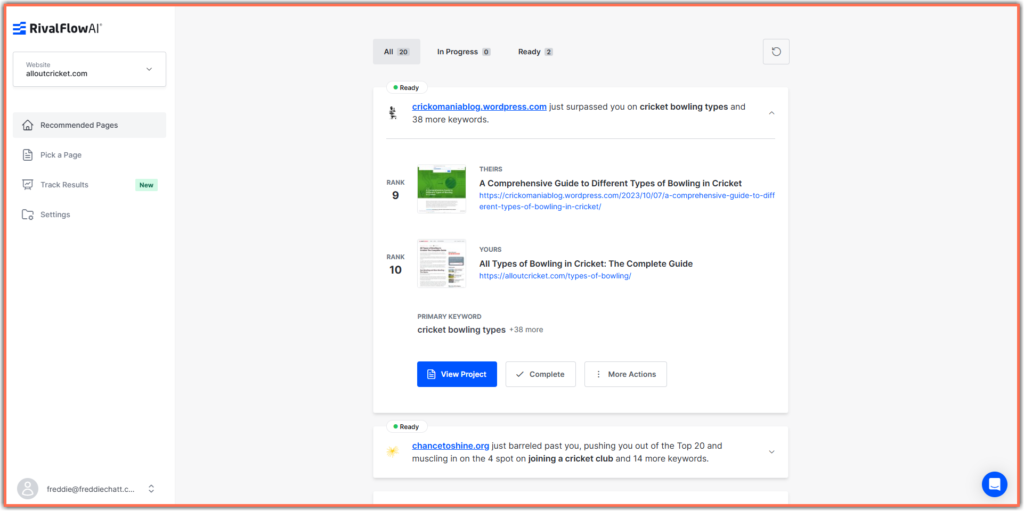Google ranking fluctuations are the changes in where your website appears in the search engine results over time. These fluctuations are super common and can happen at any time for various reasons. But for website owners, they can still be incredibly stressful to deal with! Not only do they directly impact your site’s visibility, causing a dip in traffic, but they also affect your sales.
Understanding why these fluctuations happen is the first step to recovering from them as seamlessly as possible. That’s why we put this guide together! Our experts have worked together to give you some practical tips and actionable tricks to use to stay on top of your SEO game.
Why Do Google Rankings Fluctuate?
When Google’s rankings fluctuate, your website’s position in the search engine results pages (SERPs) may change unexpectedly. And, although these changes are common, they can affect how much traffic your website receives.
This can impact your overall business since lower rankings mean fewer people will find your site. And with fewer people visiting your site, you’re less likely to make sales or have conversions.
So, why do these fluctuations happen?
Algorithm updates
One of the main reasons for ranking fluctuations is that Google is constantly performing search algorithm updates.
Google’s job is to provide the best – and most relevant – results for its users, so it regularly changes how it ranks websites. These updates happen quite often, but each time Google tweaks its algorithm, it may adjust the way it evaluates and ranks sites.
For example, a website or page that was ranking well for certain keywords may lose its position on the SERPs after an update. This is usually because the algorithm now gives weight to other factors like backlinks or content quality (but more on this later).
Other factors
Aside from updates to Google’s algorithm, ranking fluctuations can happen when you make updates to your own website. It may also be due to changes in competitor sites, or even technical issues like Google syncing its servers.
These other factors can contribute to the changes you see in your search rankings. And, although this may be frustrating, these changes are unfortunately all part of the process.
Luckily, by staying up-to-date with your search engine optimization (SEO) efforts and best practices, you can stay ahead of the curve and outrank your competition.
The 6 Main Reasons For Ranking Fluctuations & How To Fix Them
Although it’s not commonly discussed, keyword ranking fluctuations are a normal part of SEO. But knowing what causes them can help you to react more effectively. While these fluctuations can’t always be avoided, there are ways to counteract them if they happen unexpectedly.
1. Google algorithm updates
Google tends to update its algorithm frequently (sometimes even multiple times a month) and these updates can change how your site ranks for certain keywords.
In recent years, Google has started implementing these updates more frequently, with each one affecting how the search engine judges your pages. For example, if you were ranking well for a particular keyword, even a simple update can cause a ranking drop.
We’ve already mentioned that Google’s goal is to provide its users with the best match for their Google search. So, this drop could mean that your page is no longer the best fit for their search queries.

How to fix it
Some updates target specific elements Google is trying to improve in the results (for example spam updates), however most updates are called ‘core updates’ and they no longer provide much insight.
To stay ahead of these changes, it’s in your best interests to follow SEO trends to see what is working, analysis of previous updates to see what others have changed and updated to claim back their traffic.
Often, there is no obvious reason why a drop has occurred and you need to be brave, carry on your current activity and hope your keyword rankings improve within the next algorithm update.
2. Changes to your content
When you make any sort of changes to your website (such as updating your content or switching host providers), your rankings may change temporarily. Google will notice the changes to your site and re-evaluate how well it meets your user’s needs. Even the smallest changes can lead to shifts in how your website ranks for certain keywords.
Of course, not every change will damage your search rankings.
For instance, if you rewrite a page on your site or improve its speed, Google will start by testing how well these changes perform. If your changes make your page more valuable or relevant to your website’s traffic (or users in general), then you will move up in ranking. However, the opposite also applies. So, if your changes take away from your page’s value, your ranking is likely to move down.
How to fix it
To avoid any unexpected drop in your rankings, keep track of any changes you make to your site. You can also log the dates of the updates you make so that if your rankings fluctuate, you can correlate the two.
If the quality of your site decreases at all, it will hurt your rankings. So you must always ensure that any updates you make to your website actually improve it. They should make your site more informative, faster, and relevant to your specific target audience.
3. Google’s servers synchronising
As the leading search engine around the world, it’s no wonder that Google operates multiple servers internationally. Unfortunately, this means that your rankings can temporarily fluctuate during server synchronisation.
For example, when you publish new content, it might appear on one server but not on the others – yet. This might cause your rankings to appear inconsistent since different users access different servers at different times.
Fortunately, these fluctuations are typically short-lived. However, they can lead to confusion if your site’s ranking seems to change unexpectedly. You may see your site ranking well on one device but not on another.
How to fix it
So, how do you troubleshoot these disruptions to your search rankings?
While you can’t do much about server synchronisation, the best course of action if you notice changes in your rankings is to check them from different devices. You can do this by searching the keywords you should be ranking for on your phone from one location and your PC from another.
Remember: There’s also a difference between local and global rankings, so your rank may vary depending on your location!
4. Automatic or manual actions
Did you know that you can receive penalties from Google? This happens when you violate any of Google’s guidelines – especially if you’re using spammy or manipulative SEO practices. Some examples include:
- Purchasing backlinks
- Keyword stuffing
- Cloaking (showing different versions of your site to different users)
- Sneaky redirects
- Thin content
When you’re penalised for practices like these, you may lose rank or be removed from the search results altogether!
There are two main types of penalties: automatic (based on the algorithm) and manual (which are issued by Google employees). A manual action is much more serious since it’s directly applied to your site by Google staff who review your site for any violations.

How to fix it
If you want to avoid penalties, it’s always best to hire SEO professionals to ensure you’re following best practices. However, it’s still a good idea to check for penalties as regularly as possible.
To do this, you can check your Google Search Console account for any manual action notices. You will always be alerted when your site is penalised. And, if there isn’t any manual action listed, then you should focus on maintaining clean SEO practices.
5. Competitor activity
Your rankings aren’t only influenced by what you’re doing. They can also be influenced by your competitors’ actions. For instance, if your competitor changes their website by adding more quality content or earning better backlinks, they may outrank you for certain keywords.
In turn, your rankings will change and you’re likely to shift positions in direct response to their SEO efforts.
How to fix it
If you have multiple competitors it can be hard to keep up with each and every one of them. Luckily, there are rank tracker tools that you can use to track your competitors’ activity.
When you lose rank, checking what your competitors are doing should be a priority. That way, you can assess their strategies and adjust your own to regain your competitive edge.
6. Personalised search results
Google typically personalises search results based on certain factors and behaviours, such as their search history and location. This means that when you search for your website, the results you see are likely influenced by your past search activity. As a result, it may look like your rankings have changed – even if they haven’t.
How to fix it
When you’re checking search results, you should use tools like rank trackers to show you non-personalised results. These kinds of tools will help you avoid the bias of your browsing history and give you a better idea of how your site ranks for specific keywords.
Additionally, you can use Google’s incognito mode to search without your personal data affecting the results. Like the rank-tracking tools, this will allow you to see a more accurate reflection of your rankings without any personal influence.
Tools And Strategies To Manage Fluctuations
When it comes to managing your ranking fluctuations, having the right tools at your disposal is essential! Without them, keeping up with algorithm updates and your competitors’ activity to keep your ranking can be a challenge.
Luckily, there are plenty of tools that can help you monitor these fluctuations and understand why your rankings are changing.
Rank tracker tools
Rank trackers are incredibly helpful for managing any rank fluctuations you might experience. They provide you with real-time data on keyword positions and help you to spot patterns. In turn, you can quickly identify if a ranking change is linked to an algorithm update or other factors.
Popular tools like Advanced Web Ranking enable you to track the performance of certain keywords across different search engines and locations. This can then give you a clearer picture of where your website stands.
These types of tools also offer you competitive insights so you can monitor how your competitors are performing and adjust your SEO strategy accordingly. Plus, regular tracking helps to ensure that you stay proactive in managing your rankings.

Proactive content updates
To keep your rankings strong, you’ll want to regularly update your website content. This means checking your site often to try and identify outdated pages and then refreshing them. You can generally do this by adding new information or making your content more relevant by updating your keywords.
When you keep your website fresh, you can show Google that it’s active and useful. Of course, this will help to boost your rankings. Plus, adding new and up-to-date information to your website will make sure you stay ahead of the competition.

Competitor analysis
By analysing your competitors’ sites, you can get a better understanding of what’s working for them and where you can improve. With certain SEO tools, you can see which keywords your competitors are ranking for, how their content is performing, and where they get their backlinks from. As a result, you can spot opportunities for improvement on your own site.
If one of your competitors is ranking higher for certain keywords, you can adjust your strategy to target similar terms or create better content to overtake them on the SERPs.
Diversifying traffic sources
It’s risky to rely solely on organic traffic. So, to protect your site from sudden ranking drops, it’s important to use other methods to drive traffic. These may include running paid ads on Google, promoting your site on social media, or using email marketing to keep your audience engaged.
When you diversify your traffic sources, you reduce the risk of losing all of your visitors if your ranking changes. You’ll also maintain a more steady traffic flow to your website and ensure long-term growth and success.
FAQs
How long do fluctuations caused by Google’s algorithm updates typically last?
Fluctuations that are caused by algorithm updates can last anywhere from a few days to several weeks. And, while some changes can cause short-term, temporary fluctuations in your rank, there are others that may take more time to address.
The impact of each of Google’s updates will depend on their size and how they change the way that Google ranks pages.
Can fluctuations in keyword rankings impact the overall traffic to my website?
Changes in keyword rankings can definitely affect your website’s traffic. After all, if your rankings drop for certain keywords, your site will likely appear lower in the SERPs. In turn, your site will get fewer clicks and have less traffic.
Are there tools or techniques to predict upcoming fluctuations?
It’s hard to predict when your rankings are going to fluctuate, but there are some tools and techniques that can help you better prepare for these unexpected changes. Certain SEO tools can help you spot potential changes by assessing how well you rank against competitors, while SEO news sites can keep you up-to-date with the latest changes to Google’s algorithm.
Final Thoughts
While ranking fluctuations can be a pain, they’re an unavoidable reality for everyone. However, there are plenty of steps you can take to avoid being negatively impacted by these changes (or at least, to avoid being impacted by them for too long).
With our guide to the most common causes of ranking fluctuations and how to solve them, you can prepare yourself to regain your standing on the SERPs as quickly as possible.